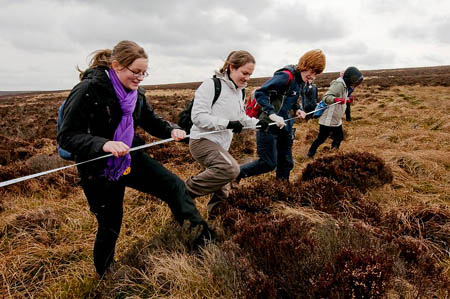School students joined national park staff to gather research evidence on climate change in the Peak District.
Hundreds of students took part in the exercise, which also involved research staff from the Moors for the Future partnership, and included field trips on to the peat moorlands of the area.
The students, aged between 13 and 18, were based at Losehill Hall and conducted measurements in peat depth, water quality, vegetation and wildlife. The University of Manchester and the Moors for the Future team will use the data collected by the young researchers, who came from 11 schools in Derbyshire, West and South Yorkshire, Greater Manchester and Staffordshire.
Co-ordinator Chris Robinson, an education officer at the Peak District national park’s environmental learning centre at Losehill Hall, said: “The students and teachers have helped design the experiments, and their findings in the field were collected using handheld sensors and GPS technology.
“The data will be collated and analysed by Moors for the Future and Dr Martin Evans at Manchester University.
“Peat moorlands have the potential to retain more carbon than all the forests in the UK and France combined, but centuries of pollution, wildfires and drainage have caused erosion. Large-scale restoration is underway in the Peak District and South Pennines by the Moors for the Future Partnership, and they use the students’ results in their research.”
It is the third year the Moorlands as Indicators of Climate Change Initiative has been run. It is helped by a £2,000 grant from the Economic and Social Research Council which runs the Festival of Social Science.
